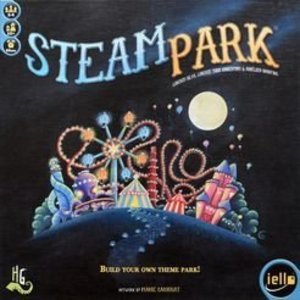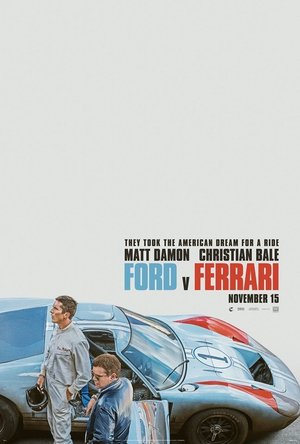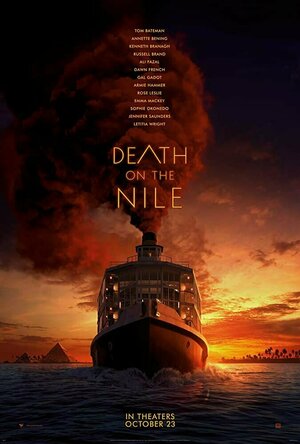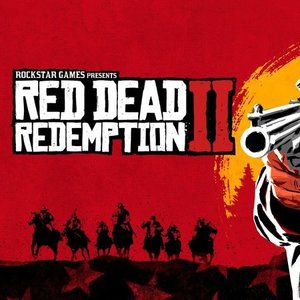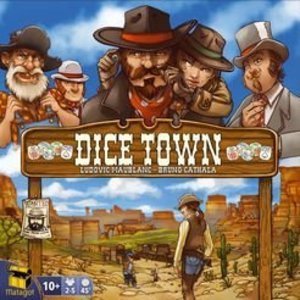
My Talking Hank
Games and Entertainment
App
With over 5 BILLION downloads and worldwide hits like My Talking Tom and My Talking Angela, Talking...

Sally's Spa HD
Games and Entertainment
App
■ ■ ■ ■ ■ Sally's Spa HD™ 30% OFF! Limited Time ■ ■ ■ ■ ■ Why wait? Relax &...

Hannah's High School Crush
Games and Education
App
Hannah wants to look gorgeous on the first date with her secret high school crush Jack! Get ready...

Topo GPS Germany - Bundesland
Navigation and Travel
App
Makes from your iPhone/iPad a complete GPS device. Includes the topographic map of one German state...
Purple Phoenix Games (2266 KP) rated Steam Park in Tabletop Games
Aug 15, 2019 (Updated Aug 19, 2021)
Steam Park is a real-time dice rolling, theme park building, negative VP mitigating game for two to four players. In it players are theme park owners who are attempting to build the greatest park in the land hoping to attract many robots and keep their parks squeaky clean. The game spans six rounds of four phases and the player with the most VP at the game end will be the winner!
To setup, separate all the different components by type and color and shuffle the cards into a face-down deck. Deal each player six dice, one large starting tile to build upon, six cards from which they will choose to keep three, and one pig board. The game may now begin!
The four phases of each round are Roll, Dirt, Actions, and Income. During the Roll phase players will simultaneously be rolling their dice until they get a result they like. The first player to finish will quickly grab the First Player token in the middle of the table. Each other player may continue rolling as much as they like, but the turn order tokens will be taken one by one until they are all gone. Bonuses exist for the First and Second Player tokens and a negative bonus for the last player (more Dirt).
The Dirt phase causes each player to add Dirt tokens to their park according to the number of Dirt symbols rolled on their dice as well as the number of visitors currently in their park. The player who nabbed the First Player token can now discard four Dirt tokens from the bonus while the last player will add two more Dirt tokens to their park.
Actions that can be taken during the next phase include: Building Rides, Building Vendor Stands, Attracting Visitors, Cleaning Dirt, Playing Bonus Cards, and Expanding the Park. Each of these actions cost symbols rolled on the dice. To build a ride of capacity three, then three Build symbols would need to be spent from those rolled, et al. The only Action that requires no specific symbol is the Expand the Park. Use any symbol to add on a small square tile to the existing park layout.
Players will collect $3 (not USD, just the game money) for every visitor enjoying their park amenities during this Income phase. If a player has less than three Bonus Cards they may draw two from the deck and choose one to take in hand.
The game continues in this fashion over the course of six rounds total and once the final Income phase has been completed players will consult the Final Dirt Track to see how much will need to be paid in Dirt fees. Whomever ends the game with the most money wins!
Components. This game has a LOT of cardboard components. Nearly everything in the box is medium-quality cardboard and generally fine. The art is quirky, whimsical, and endearing. The insert leaves much to be desired so I made my own out of foam board. I have no complaints about the components except that I wish I could visit some of the rides, and I am still not super sure why the dice locking area is a metal pig token.
I originally played Josh’s copy he brought over to my house. I fell in love with it right away, and I still very much enjoy it. It will never make my Top 10 Games of All Time, but I will cherish my copy. I have yet to add in the Play Dirty expansion for it, as I like the base game so well, but I plan to sometime soon.
What I like most about it is the real-time rolling of the dice coupled with the grabbing of the turn order tokens when satisfied. This means that I could just go with what I roll after one roll, or I can take my time and just accept the Dirt coming my way. Sometimes being last and taking that extra Dirt is worth having all the dice read what you really want.
I also like having a lot of vendor stands in my park. Finding room for them is a different story, but I end up usually having just a few rides and mostly stands. They each provide some different benefit or way to change up the game a little that I just love to take advantage of them.
I adore games with real-time dice rolling, so I was predisposed to being attracted to Steam Park. Coupled with the great overall theme, this is an easy win for me, and a prized entry in my collection. In fact, I’m not the only one of us who thinks this as Purple Phoenix Games gives Steam Park a monotone-robot-thrill-seeker-scream 14 / 18. If you are tiring of Escape: The Curse of the Temple (which is possible), then pick up a copy of Steam Park. It will spark your joy of frantic dice rolling once more!
Lee (2222 KP) rated Ford v Ferrari (aka Le Mans '66) (2019) in Movies
Nov 5, 2019 (Updated Nov 5, 2019)
Le Mans ‘66 (or Ford v Ferrari as it is known elsewhere - much better name, no idea why it needed to be changed) stars Matt Damon and Christian Bale (once again going through some weight loss for a movie role) as Carroll Shelby and his engineering partner Ken Miles. Shelby was the first American to win Le Mans, the 24 hour race held in France, in 1959, but has since retired from racing due to a heart condition. These days, Shelby designs and sells souped-up cars as well as running the racing team Cobra, along with British racing driver Ken Miles. Shelby is calm, very clever and extremely determined and Miles knows everything there is to know about cars, but isn’t exactly what you might call a good ‘people person’. Together they have a wonderful friendship and partnership, the highs and lows of which form the basis and heart of the movie.
Meanwhile, Ford Motor company is suffering from poor sales and Henry Ford II (Tracy Letts) is looking to his workforce to come up with the next big idea in order to try and boost the Ford name. One of the many corporate suits we see during the movie, Lee Iacocca (Jon Bernthal) proposes that Ford buy into Ferrari in order to create a winning sports car that will make Ford cool again with the kids, so they head to Italy for a meeting with Enzo Ferrari. The meeting doesn't really go according to plan though, and the suits return home with their tails between their legs, and a strong desire to go to war with Ferrari and teach them a lesson.
Ford puts its money where its mouth is, pretty much writing a blank cheque for Shelby to come up with a car worthy enough to defeat Ferrari and win Le Mans ‘66, and we then follow Shelby, Miles and their team as they struggle to make it happen. Problems arise when Shelby is repeatedly put under pressure by the corporate suits at Ford to ditch Miles, feeling that he doesn’t quite fit with the Ford image, and this puts strain on both the project and the friendship between Shelby and Miles, eventually resulting in a comedy brawl reminiscent of the one involving Hugh Grant and Colin Firth in Bridget Jones Diary!.
Caitriona Balfe plays Miles' wife, Mollie, and it’s great to finally see her out of period costume and outside of TV show Outlander. It’s a role that could easily have been relegated to the usual, long-suffering spouse, sitting at home watching hubby race with baited breath, and while there is a fair bit of that, she does prove to be a strong and worthy addition to the cast. As does Josh Lucas, one of the dastardly, clueless suits who thinks he knows best. It’s a fantastic, jam-packed cast, but never detracting from the central Shelby/Miles friendship and dynamic.
I’ve come this far without talking about the race itself. There are a number of enjoyable, smaller races throughout the movie, giving us a taste of the high energy, intense camerawork to come, but that’s nothing compared to the 24 hours of racing we get when the team eventually arrive in France. As Shelby and his team look on in the pits, watched over in the stands above by the suits from Ford, and by team Ferrari in the stand next to them, Miles takes it in turns with other drivers to try and win the race, through the night and in heavy rain, dealing with car problems already experienced and worked upon throughout the movie, as well as yet more meddling from those pesky suits.
The pacing of the race is perfect. Putting you right in the heart of the action, occasionally cutting to the drama in the pits and between the team, all the while desperate to get one over on the all powerful Ferrari. This is a movie that can be enjoyed by petrol heads, and non enthusiasts like me, in equal measure, and I had an absolute blast watching it. Highly recommended.
Chris Sawin (602 KP) rated Death on the Nile (2022) in Movies
Feb 10, 2022
The 2022 film has been completed since December of 2019. The film was moved around several times due to COVID and was pushed back even further after Armie Hammer’s abuse allegations.
Mostly occurring shortly after the events of Murder on the Orient Express, Death on the Nile offers a bit of a look into the past of Hercule Poirot (Branagh). Taking place on the Yser Bridge in Belgium In 1914, a young Poirot advises his Belgian captain to attack the Germans spontaneously without warning. The attack is a success, but Poirot’s captain triggers an explosive after their victory. The explosion leaves Poirot’s face heavily scarred and offers an explanation as to why he always has a mustache.
Poirot reunites with his friend Bouc (Tom Bateman, who also returns from Murder on the Orient Express) in Egypt. Bouc is traveling with his mother Euphemia (Annette Bening) and their friends as they celebrate the marriage of Linnet Ridgeway (Gal Gadot) and Simon Doyle (Armie Hammer). To make matters more complicated, Simon was originally romantically involved with Jaqueline (Emma Mackey) who was also a former friend of Linnet. She now scornfully follows Simon and Linnet around Egypt.
The party travels on the S. S. Karnak, a steamship, along the river Nile. A murder eventually takes place on the steamship, which ignites a desire within Poirot to discover who the killer is before more suffer the same fate.
CGI and visual effects are used to make Kenneth Branagh look younger in the opening sequence of the film. The issue is he looks almost as bad as Henry Cavill did as Superman during the reshoots for Justice League. Branagh’s upper lip is almost nonexistent during this sequence and his philtrum seems to barely move when he speaks. It’s a visual nightmare and a terrible way to jump start a murder mystery.
Poirot travels to a Jazz nightclub where he’s first introduced to Simon, Jacqueline, and Linnet. Poirot spends much of the film embracing his OCD habits and people watching. This first nightclub sequence is about ten minutes long and you’re basically forced to watch people do nothing but dance for that entire time. Armie Hammer’s overly sexual dancing combined with his heavy breathing and constant sweating with both Gal Gadot and Emma Mackey is nauseating even without taking his sexual allegations into consideration.
Nothing really happens in the film for the first hour. Death on the Nile takes its time getting to the murder as little things begin to disappear (like a tube of paint) and Simon and Linnet are nearly crushed to death by a falling rock as they’re practically mid-coitus while sightseeing some pyramids. Emma Mackey gives a particularly strong performance. She is blinded by one-sided love in the film and her performance is a combination of passion, borderline insanity, and a broken heart.
Annette Bening is so cynical that it’s humorous and Jennifer Saunders adds just enough sarcastic bite to remind us ever so slightly of Absolutely Fabulous. Letitia Wright portrays business manager Rosalie Otterbourne. Her performance is intriguing because she’s always fighting for what she feels like she’s rightfully owed; whether it’s the right amount of money for her services or her happiness away from the limelight.
Like Murder on the Orient Express and other Agatha Christie adaptations, the enticing aspect of Death on the Nile is not only its massive and recognizable cast but also the fact that the story is written in a way that everyone is a suspect. The film’s nonchalant way of meandering towards that first murder is frustrating. A deliberate pace is one thing, but Death on the Nile is boring for the most part. Poirot is asked to take a case involving Jacqueline and the safety of Simon and Linnet, but is then mocked for being heartless and not being able to solve the case sooner. The people on board are likely meant to be scared, but come off as rich people not getting what they want the instant they want it.
Death on the Nile crawls towards a resolution you don’t feel invested in. Poirot’s backstory is interesting and there are some solid performances especially from the female cast, but the film otherwise feels like an unwanted game of Guess Who after you unwillingly chug two bottles of NyQuil and are asked to predict who the killer is after two long hours of tediousness.
Fred (860 KP) rated the PlayStation 4 version of Red Dead Redemption 2 in Video Games
Dec 4, 2018
Let's start with what this game is about. It's an open world game, set in the old west. It's set before the events of Red Dead Redemption. In that game, you played as John Marston. In that game, John was a man trying to change his life. He was a criminal, a thief, a murderer, but he's gone straight In this game, you play as Arthur Morgan. A criminal in the same gang with John. He is a bad guy, no doubt. But throughout the game, he has many opportunities to do good. Of course, you can play him that way, or you can play him as a heartless bastard. This will effect some of the story, the dialogue & the ending of the game. I played the game as if Arthur was a good guy inside & the ending I got was very satisfying, very emotional.
For most of the story, you're on the run with your gang, setting up different camps throughout the map, evading rival gangs & the law. This is a great way to get to know the world, however, you're free to explore most of the map freely. It is enormous & gorgeous. Some of the best scenery I've seen in a game. Sometimes you will really feel you're living in a real world. And that's the greatest thing about this game. The immersion. You really feel like you're living the life of your character. And Rockstar did that by making you take care of your character. You shave, bathe, eat & take care of your horse. Yes, you name your horse, feed it, brush it, pet it. You get very attached to it, as it is your main way of getting around. If your horse dies, it's gone. And believe me, it hurts to lose your horse.
Rockstar fills the game with so many missions, side activities, random encounters & hidden Easter eggs that it will take you weeks to do them all. I've been playing since day one, an average of 6 to 7 hours a day, & today, 5 & a half weeks later, I finally got 100% in the game. To be honest, when I first started, I spent lots of time just riding around, finding activities & hidden goodies & enjoying the scenery. Like most of their games, there's a supernatural element to some things as well as supernatural encounters. Steampunk, monsters, etc... a little bit of everything. Some encounters are funny, some terrifying, all of them cool.
I think what makes this game different & better than it's predecessor is the characters themselves. I'm not talking about the main characters alone, I'm talking about the people who litter the world. In RDR, some of the characters were silly, off-the-wall & unnatural. They were cartoonish. In RDR2, the people are real. Some may be weird and a bit crazy, but they never feel fake. They never feel like a character. Because of this, the world lives. They breathe life into it with every interaction. From the
Civil War veterans to the blind beggar, to the racist jackass standing on the corner in Saint Denis handing out pro-white pamphlets. They really make you feel like you're there. Again, immersion.
Some of the things you can do besides the missions are rob people, trains, coaches, banks. Another thing is hunting. Hunting can be a great way to make money. During the game, there are many challenges that you can undertake as well. There's are 9 categories with 10 challenges to each that can be done at your leisure. I left a lot of these to do last. I honestly didn't think I'd be able to do some of them. They just seemed ridiculous. But funny enough, I did about 50 of the last challenges within 2 days. And when I finished, I expected my 100% trophy to pop up. But it didn't. I was at 99%. What the? Looking at my completion list, there was something under the collections section that said unknown collection. Searching the internet, I found that most sites didn't have it listed. But I finally found a site that did. The last collection was the hunting challenge. And this brings us to that feckin robin.
Okay, let me explain. The hunting challenge you are given is to kill 5 different lists of animals. Each animal must be a perfect carcass. Which means, they have to be of perfect quality before you kill them & you must not damage them while killing them. Well, all of these animals are small animals. And most of them are small birds. It was fairly easy to get most of these animals. But there was one that was a huge pain in the ass. Can you guess what it was? Yes, a robin. A small, fast bird that is so rare, there are pages & videos galore on finding one. Most of which as total bollocks. How do I know? I spent over 7 hours trying to find one. Going to all these spots, seeing 3 of them total, shooting one & ruining it's carcass, & missing the other 2 based on their disappearance through the trees. I was really going to give up. So close, but so far. Luckily, using some people's hints & coming up with my own, I finally figured out how to get him. And it then took me 15 minutes. Yes, 15 minutes with 7 hours of wasted time. I am putting this as a negative, because it was really ridiculous to try to hunt this thing. So aggrivating. I understand if they want to make something rare, but it's just not nice. I felt like Rockstar was pulling a joke on it's players.
But anyway, this still doesn't bring down my score of the game. It's one of the greatest games I've ever played. But Rockstar has many perfect 10 games under it's belt in my opinion, including RDR. Is this game better. Yes, I think so. But it's oh so close.
A quick word on RDR online. It's only in beta, so I can't give a true review yet. However, I'm finding it so much fun doing missions with other people. Of course, there are jackasses going around shooting people for no reason. It gives no benefit to do so. Not all of the features are in there yet, but I will be playing when it goes to full online & will giv an update.
Purple Phoenix Games (2266 KP) rated Dice Town in Tabletop Games
Aug 13, 2019 (Updated Jun 24, 2021)
Dice Town is a rootin’-tootin’ dice chuckin’ game relying heavily on poker and card majority. Each player is trying to gain the most money, gold nuggets, and property cards to beef up their VP totals once the game ends to become the baddest dude in the West.
To setup, place the town board in the middle of the table and populate its different areas with their components: the Gold Mine receives all the gold nuggets, the Bank receives $3 initially, the General Store receives all the cards of its deck with three property cards will be displayed next to Town Hall, and Doc Badluck will receive its deck with two cards displayed. Each player will receive a dice cup, five dice, and $8 to start. The youngest player received the Sheriff badge card and the game may begin!
Turns are taken simultaneously among all players. Players will roll their dice using the dice cup and choose one result to keep. They may keep more dice by paying $1 for each die kept, or they may pay $1 to keep zero dice and try again. Players are attempting to roll the best poker hand during these turns to set themselves up for the next phase of the game – actions.
Once all players are finished keeping dice and building poker hands, they move to the actions phase. Beginning with the Gold Mine and moving left to right, each area of town will be resolved based on the players’ results. The player with the most 9s rolled will take nuggets from the Gold Mine equal to the number of 9s rolled. The player with the most 10s will take the money at the bank. Most Jacks will draw General Store cards (that can mess with other players or help the holder) equal to the number of Jacks rolled and choose one card to keep. The most Queens will summon a lady at the Saloon to help steal any General Store or property card from another player. Most Kings will be the new Sheriff in town and will break all ties (and also can be bribed). Whomever was able to build the best poker hand will be able to claim the property card at the bottom of the display and one additional property for each Ace rolled. Finally, if a player was not able to win anything up to this point, they will be able to claim a card from Doc Badluck which can be very powerful.
Play continues in this fashion until either the supply of gold nuggets has run dry or all of the property cards have been doled out. Players will score VPs for nuggets, certain General Store cards, one VP per $2 cash, $5 from being Sheriff at the game end, and VP printed on property cards owned. Once the winner is determined, that player must now challenge the losing players to a duel at high noon. Or just gloat a lot.
Components. As you can see in the photos, the component quality is excellent, as with most Matagot titles. The dice cups are sturdy plastic, the embossed poker dice are awesome, the gold nuggets are great as well! I like the quirky cartoony art style. What I do not like about Dice Town components are the cards. They are super glossy, and that’s heck for taking photos and I just don’t enjoy the feel of them as much as the nice linen-finishes. It doesn’t break the game for me or make me enjoy playing it less, I just prefer other types of finishes on cards.
I really like Dice Town. I have always had a great time when playing, and I have even acquired it twice now. I sold my first edition copy via a BGG auction (I was addicted to auctions several years back) and missed it, so I was able to grab a second edition copy last year. I haven’t regretted reacquiring it and though I rated it a 4 I don’t see this ever leaving my collection again. I love the American West theme, and I love the way the dice cups feel and sound as players are slamming them on the table. But also I hate the way the dice cups sound as players are slamming them on the table when my children are trying to sleep or without some type of buffer material between the cups and a hard table top.
The second edition printing is definitely the way to go when deciding whether to purchase Dice Town. Everything is upgraded, and the rules have been tweaked a bit for the better. I don’t really know why I like American West in my board games so much because I can’t stand Western style movies or books, but I can’t get enough of them in my games. If you and I share preferences on games and themes and components, try to grab a copy of Dice Town. You will certain like it quite a bit. We do. Purple Phoenix Games give this one a 12 / 18. While that doesn’t seem like a great score, we would rather have access to it than not. And with so many games out there, earning a place on my shelf is a big deal for a game. So enjoy!
blueirisfox (125 KP) rated the PC version of Final Fantasy XIV Online Complete Edition in Video Games
Feb 16, 2020 (Updated Feb 16, 2020)
But still, against all odds, I found this amazing world and community and I am just so in love with it.
I've been playing this game since around June/July of 2019, and only actually bought the full version the following Christmas, so I still consider myself to be a newbie. I'll try my best to review the content that I've played, as well as the content I've seen others play.
Before I say anything else, I feel that I need to get this across. If you are completely new to this game, don't spend any money on it yet! There is a free trial that DOESN'T HAVE A TIME LIMIT and is FREE. If you actually buy the game, you will have to start paying for the online subscription after the first 30 days free are used up. You will be saving a lot of money by just playing up to the level cap of the free trial at your own pace. The level caps at 35, which sounds like it's not that high, but this applies to ALL CLASSES and not just one - so you can multiclass and level them all up to 35. Also, this will let you experience the game without much sacrifice and give you the opportunity to see if you actually like this game, or if it's not for you.
When you do come around to buying it, I would recommend getting the compete edition. It works out a lot cheaper since it comes with everything. So if you're not sure which one to get, then this is the best one. However, a cool thing about this game - and the greatest cause of confusion among new players - is that buying the newest expansion will also give you all the old ones too, BUT this will only be playable if you have the base game first. And it is for this reason that it ends up cheaper to get the complete edition, since the Shadowbringers expansion alone is about £40.
Now, onto the review...
I have heard this game be compared to World of Warcraft (WoW) many times before. I've never played WoW, but I'm sure that this gives a bit of a better idea of what kind of game this is.
There are different Data Centers and Servers you can play on, and simply hopping from one to another can give the game a completely different feel. When I started out on Omega, it felt like a quiet and cozy little community of players. I know now that this server is a roleplay (rp) oriented server, but I could have easily jumped onto a more player-vs-player (pvp) oriented one, or a busier and more hectic server. So I guess that it was pure luck that I picked a server that matched my slow and cosy play style. I'm pretty sure that there is a reddit post that explains what the different servers are like, although this is likely to change with time as certain servers grow.
Onto Character creation. Oh how I love my character creation. I am proud to say that I have spent many hours in this part of the game alone, which is the main reason why I have so many playable characters scattered on different servers. I do have some criticisms for this one, but by the same note I have a lot of love for it.
So first of all, there are a total of 8 playable races: The Hyur (humans), the Elezen (elves), the Lalafell (midgets), the Miqo'te (cat people that look like ichigo from Tokyo Mew Mew), Roegadyn (buff giants), Au Ra (part dragon? They have cool horns), Hrothgar (Actual cat people, like the guy from FFX), and finally Viera (the bunny girl).
Phew! Got all their names out. Now I can critique.
So first of all, I feel that I should mention that only the first five races are available in the free trial and base game. The other three races are unlocked through buying the expansions (Heavensward, Stormblood, and Shadowbringers) although I'm not entirely sure which ones specifically since I bought the complete edition.
My biggest beef with the races as of writing this review, is that Hrothgar and Viera are gender locked. Hrothgar's are locked to males, and the Viera are locked to females. These races are the newest to be added, so there is still a chance of introducing the other genders - which isn't as unlikely as you may think, since the FFXIV team listen to the community a lot, and fix/introduce many features wanted by the community.
Furthermore, these two races are a bit limited in their customisation. The Hrothgar have the problem of the hairstyles being locked to face types (which there are only 4 or 5 of), and unlike every other race, they have to buy a fantasia to make changes to the hairstyle. Fantasia are used to change your character's look, from race to gender, to smaller features like eye and skin colour - they are intended to change permanent features, which is why it's a bit unfair to Hrothgar players looking for a new look that could normally be achieved through the Aesthetician (stylist) - I'm pretty sure i spelled that wrong 😅
Then there is the Viera. Don't get me wrong, I love this race - I'm currently playing one myself. But I can't help but be sad over the lack of compatible hairstyles and head gear. I didn't mention this before, but you can aquire new hairstyles through certain areas of gameplay. When I was playing a Hyur (human), I could fully enjoy these hairstyles without a problem. But when I tried it on the Viera, it just didn't work at all. And if that wasn't bad enough, my character can't wear a lot of the hats in the game, which is just infuriating to me since I really love the glamour system and making cool looking characters.
Those were my biggest peeves with the game, and now they are out of the way.
I'll keep the rest brief, since this is quite a long review already.
The housing system looks really cool, with a lot of different housing items that can be used. I've seen some really epic houses so far. Housing and furnishings are really expensive, so this is more of a long term goal. Saying that, the cheaper alternative is apartments, although you lose out on a garden (unless you make an indoor one - and I'm not sure how functional it would be since I can't afford housing), as well as loosing basements I'd imagine.
The rest is in comments because it didn't fit..
